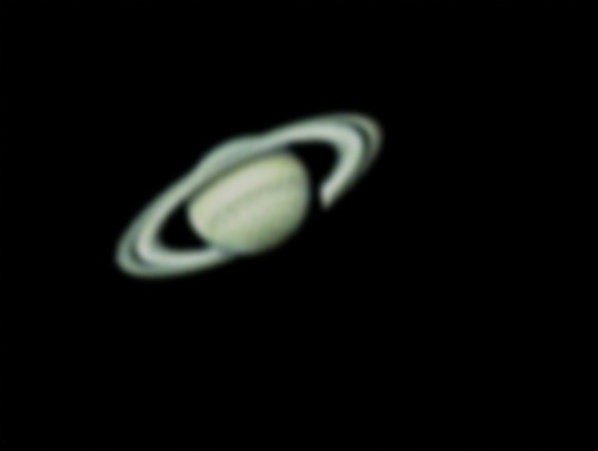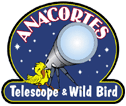Astronomers Spot Three Supermassive Black Holes On a Collision Course

This new visualization of a black hole illustrates how its gravity distorts our view, warping its surroundings as if seen in a carnival mirror. The visualization simulates the appearance of a black hole where in-falling matter has collected into a thin, hot structure called an accretion disk. The black hole’s extreme gravity skews light emitted by different regions of the disk, producing the misshapen appearance. Bright knots constantly form and dissipate in the disk as magnetic fields wind and twist through the churning gas. Nearest the black hole, the gas orbits at close to the speed of light, while the outer portions spin a bit more slowly. This difference stretches and shears the bright knots, producing light and dark lanes in the disk. Seen nearly edgewise, the turbulent disk of gas churning around a black hole takes on a crazy double-humped appearance. The black hole’s extreme gravity alters the paths of light coming from different parts of the disk, producing the warped image, but exactly what we see depends on our viewing angle. The greatest distortion occurs when viewing the system nearly edgewise. (Image credit: NASA, Goddard Space Flight Center, Jeremy Schnittman)
Astronomers Spot Three Supermassive Black Holes On a Collision Course
Astronomers have spotted three giant black holes within a titanic collision of three galaxies. The unusual system was captured by several observatories, including three NASA space telescopes.
It should be noted that five billion years from now, our Milky Way galaxy will collide with the Andromeda galaxy. As is the case with these three galaxies, this will mark a moment of both destruction and creation. The galaxies will lose their separate identities as they merge into one. At the same time, cosmic clouds of gas and dust will smash together, triggering the birth of new stars. Most of the hundreds of billions of stars in each of the galaxies will never actually collide, but will pass rather freely between each other with little damage. This however, will not be the case for the interstellar matter consisting largely of clouds of debris, dust, and gas. The high relative velocities and pressures between the interacting interstellar clouds will pull, twist, and distort the individual galaxies and trigger a firestorm of star formation.
“We were only looking for pairs of black holes at the time, and yet, through our selection technique, we stumbled upon this amazing system,” said Ryan Pfeifle of George Mason University in Fairfax, Virginia, the first author of a new paper in The Astrophysical Journal describing these results. “This is the strongest evidence yet found for such a triple system of actively feeding supermassive black holes.”
The system is known as SDSS J0849+1114 and is located a billion light years from Earth.
To uncover this rare black hole trifecta, researchers needed to combine data from telescopes both on the ground and in space. First, the Sloan Digital Sky Survey (SDSS) telescope, which scans large swaths of the sky in optical light from New Mexico, imaged SDSS J0849+1114. With the help of citizen scientists participating in a project called Galaxy Zoo, it was then tagged as a system of colliding galaxies.
Then, data from NASA’s Wide-field Infrared Survey Explorer (WISE) mission revealed that the system was glowing intensely in infrared light during a phase in the galaxy merger when more than one of the black holes is expected to be feeding rapidly. To follow up on these clues, astronomers then turned to Chandra and the Large Binocular Telescope (LBT) in Arizona.
The Chandra data revealed X-ray sources – a tell-tale sign of material being consumed by the black holes – at the bright centers of each galaxy in the merger, exactly where scientists expect supermassive black holes to reside. Chandra and NASA’s Nuclear Spectroscopic Telescope Array (NuSTAR) also found evidence for large amounts of gas and dust around one of the black holes, typical for a merging black hole system.
Meanwhile, optical light data from SDSS and LBT showed characteristic spectral signatures of material being consumed by the three supermassive black holes.
“Optical spectra contain a wealth of information about a galaxy,” said co-author Christina Manzano-King of University of California, Riverside. “They are commonly used to identify actively accreting supermassive black holes and can reflect the impact they have on the galaxies they inhabit.”
One reason it is difficult to find a triplet of supermassive black holes is that they are likely to be shrouded in gas and dust, blocking much of their light. The infrared images from WISE, the infrared spectra from LBT and the X-ray images from Chandra bypass this issue, because infrared and X-ray light pierce clouds of gas much more easily than optical light.
“Through the use of these major observatories, we have identified a new way of identifying triple supermassive black holes. Each telescope gives us a different clue about what’s going on in these systems,” said Pfeifle. “We hope to extend our work to find more triples using the same technique.”
“Dual and triple black holes are exceedingly rare,” said co-author Shobita Satyapal, also of George Mason, “but such systems are actually a natural consequence of galaxy mergers, which we think is how galaxies grow and evolve.”
Three supermassive black holes merging behave differently than just a pair. When there are three such black holes interacting, a pair should merge into a larger black hole much faster than if the two were alone. This may be a solution to a theoretical conundrum called the "final parsec problem," in which two supermassive black holes can approach to within a few light-years of each other, but would need some extra pull inwards to merge because of the excess energy they carry in their orbits. The influence of a third black hole, as in SDSS J0849+1114, could finally bring them together.
Computer simulations have shown that 16 percent of pairs of supermassive black holes in colliding galaxies will have interacted with a third supermassive black hole before they merge. Such mergers will produce ripples through spacetime called gravitational waves. These waves will have lower frequencies than the National Science Foundation’s Laser Interferometer Gravitational-Wave Observatory (LIGO) and European Virgo gravitational-wave detector can detect. However, they may be detectable with radio observations of pulsars, as well as future space observatories, such as the European Space Agency’s Laser Interferometer Space Antenna (LISA), which will detect black holes up to one million solar masses.
For more information:
https://www.nasa.gov/mission_pages/chandra/images/found-three-black-holes-on-collision-course.html
https://www.nasa.gov/feature/goddard/2019/nasa-visualization-shows-a-black-hole-s-warped-world
https://astromart.com/news/show/astronomers-capture-first-ever-image-of-a-black-hole
https://astromart.com/news/show/now-this-is-what-its-like-when-worlds-collide
https://astromart.com/news/show/cornell-astronomers-ask-what-happens-when-worlds-collide
Astromart News Archives:
https://www.astromart.com/news/search?category_id=3&q=.
Do you enjoy reading these postings?
Then click here and buy the Astromart staff a cup of coffee (and maybe even some donuts):
https://www.astromart.com/support-options
Funding Member
Sponsors
- astronomy-shoppe
- Waite Research
- FocusKnobs
- BW
- Desert Sky Astro Products
- AstroMart LLC
- Rouz Astro
- Anacortes Telescope
- ASTROPHOTOGRAPHY BY MARTIN PUGH
- BBLABS LLC
- Bob's Knobs
- SellTelescopes.com
- Astromart Customer Service
- RemoteSkies.net
- APM-Telescopes
- OMI OPTICS USA LLC
- Matsumoto Company
View all sponsors



